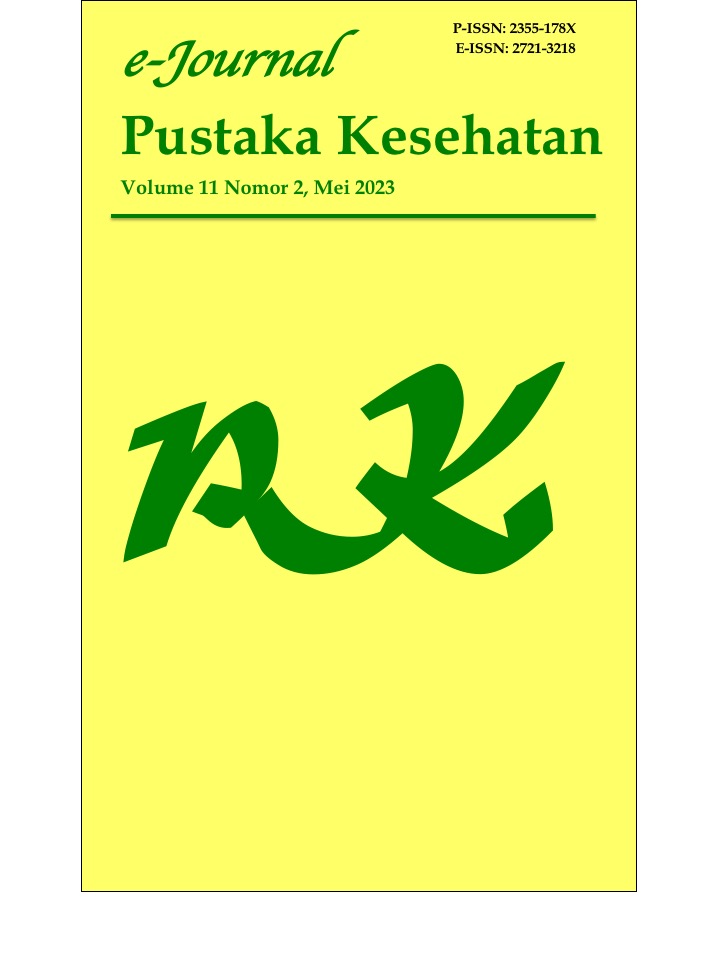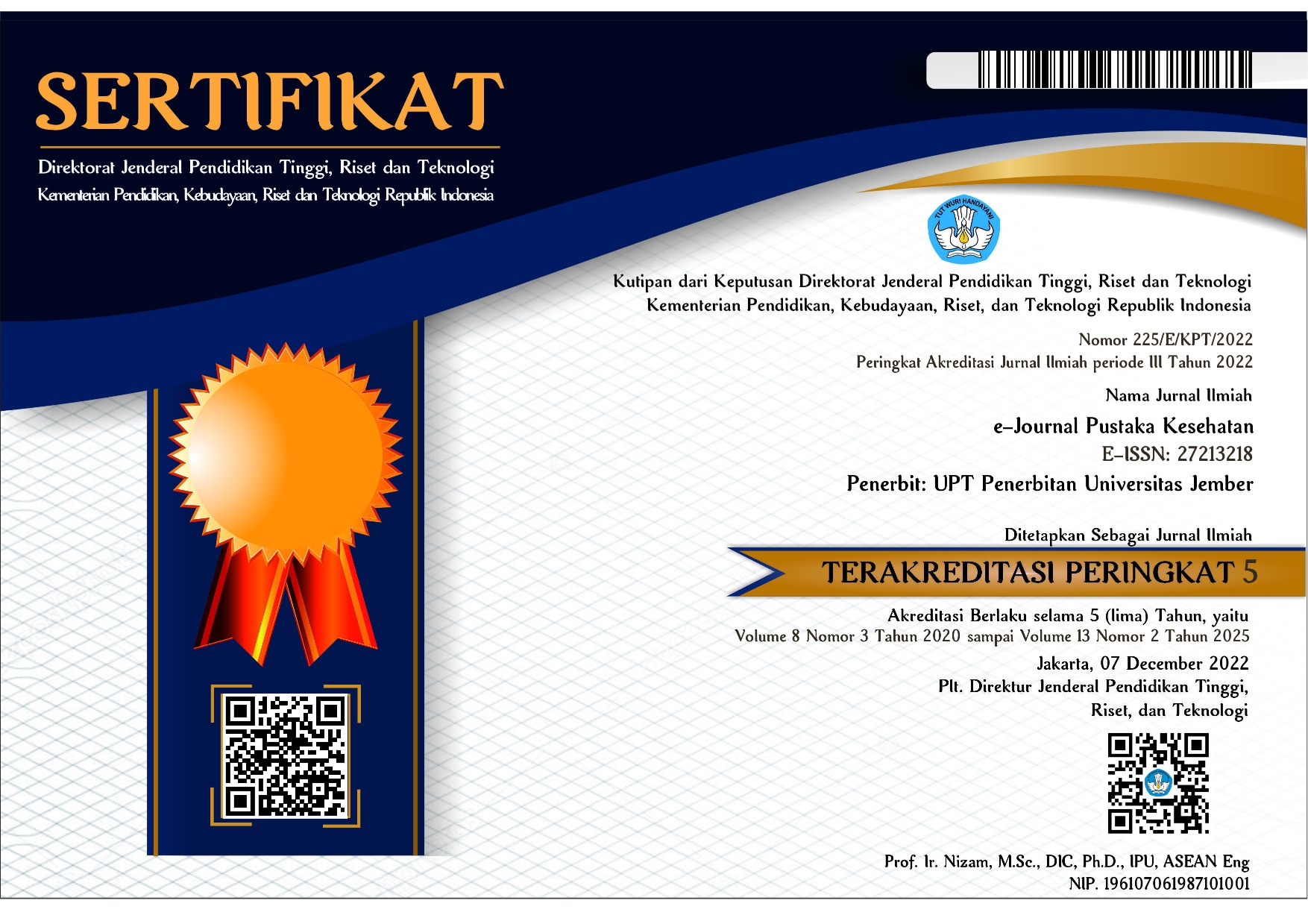Pengembangan Sensor Antioksidan berbasis Kertas Zonamikro dengan Imobilisasi DPPH pada Sampel Ekstrak Tanaman
DOI:
https://doi.org/10.19184/pk.v11i2.12958Keywords:
DPPH assay, paper-based sensors, antioxidant activityAbstract
Development of a paper-based antioxidant sensor using DPPH reagent. This sensor is made using a screen-printing method to create a 5 mm diameter detection zone which is immobilized with DPPH reagents. The analysis was carried out in one step by immobilizing antioxidants/samples in the detection zone. After reduction by antioxidants, DPPH radicals become stable DPPH molecules, resulting in a change in color from purple to pale yellow. The purple intensity of DPPH was inversely proportional to the antioxidant activity of the sample and was measured using the help of ImageJ software. The optimal conditions for using DPPH reagents at a concentration of 5 mM and the volume in each detection zone were 3 µL. Characterization of this sensor analysis was carried out on gallic acid with the response time in the 12-minute, linearity with r = 0,9895, detection limit (LOD) value 0,0349 mM GAE, the quantitation limit (LOQ) value was 0,1164 mM GAE, with precision <2% (RSD), and meets the accuracy range of 97-103%. This sensor is then validated against DPPH spectrophotometry UV-Vis by analyzing antioxidant activity from plant extracts. The results showed no significant differences for the gallic acid equivalent for all samples obtained from the two methods at a confidence level of 97-103%, indicating that the method developed could be relied upon to analyze antioxidant activity from real samples. Finally, the paper-based antioxidant sensor is known to be stable for three days when stored in the refrigerator (2- 4 °C), stable for 2 hours at room temperature (25ºC), and makes paper sensors easy to use for end users.
Downloads
References
[2] Carrilho E, Phillips ST, Vella SJ, Martinez AW, dan Whitesides GM. Paper Microzone Plates. Analytical Chemistry. 2009. 81(15):5990–5998.
[3] Gomes S dan Rebelo MJF. A New Laccase Biosensor for Polyphenols Determination. Sensors. 2003. 3:166–175.
[4] Halliwell B. dan Gutteridge JMC. Free Radicals in Biology and Medicine. Fifth Edition. Oxford: Oxford University Press. 2015.
[5] Harmita. Petunjuk Pelaksanaan Validasi Metode Dan Cara Perhitungannya. Majalah Ilmu Kefarmasian. 2004. 1(3):117–135.
[6] Hidayat MA, Fitri A, dan Kuswandi B. Scanometry As Microplate Reader for High Throughput Method Based on DPPH Dry Reagent for Antioxidant Assay. Acta Pharmaceutica Sinica B. 2017. 7(3):395–400.
[7] Hidayat MA, Sari P, dan KuswandiB. Simple Scanometric Assay Based on DPPH Immobilized on Pharmaceutical Blister for Determination of Antioxidant Capacity in The Herbal Extracts. Pharmaceutical Journal. 2018. 22(3):450–459.
[8] Huang SS, Deng JS, ChenHC, Lin YH, dan Huang GJ. Antioxidant Activities of Two Metallothionein-Like Proteins from Sweet Potato (Ipomoea batatas [L.] Lam. “Tainong 57â€) Storage Roots and Their Synthesized Peptides. Botanical Studies. 2014. 55(1):1–9.
[9] Irivibulkovit KS, Ouanthavong SN, dan Ameenoi YS. Paper-Based DPPH Assay for Antioxidant Activity Analysis. Analytical Science. 2018. 34(July):795–800.
[10] Ismail A, Marjan ZM, dan Foong CW. Total Antioxidant Activity and Phenolic Content in Selected Vegetables. Food Chemistry. 2004. 87(4):581– 586.
[11] Mandal S, Yadav S, Sunita Yadav, dan Nema RK. Antioxidants: a review. Journal of Chemical and Pharmaceutical Research. 2009. 1(1):102– 104.
[12] Sari AN. Antioksidan Alternatif Untuk Menangkal Bahaya Radikal Bebas Pada Kulit. Journal of Islamic Science and Technology. 2015. 1(1):63–68.
[13] Vilanova CDDA, Pereira RP, Reetz LGB, Oliveira L, Farias ILG, Boligon AA, dan Athayde ML. Antioxidant Effects of Phyllanthus niruri Tea on Healthy Subjects. Asian Pacific Journal of Tropical Medicine. 2014. 113–118.
[14] Yuwono M. dan IndrayantoG. Validation of Chromatographic Methods of Analysis. Profiles of Drug Substances, Excipients, And Related Methodology. 2005. 32(05)
Downloads
Published
Issue
Section
License
e-Journal Pustaka Kesehatan has CC-BY-SA or an equivalent license as the optimal license for the publication, distribution, use, and reuse of scholarly work. Authors who publish with this journal retain copyright and grant the journal right of first publication with the work simultaneously licensed under a Creative Commons Attribution-ShareAlike 4.0 International License that allows others to share the work with an acknowledgment of the work's authorship and initial publication in this journal.







